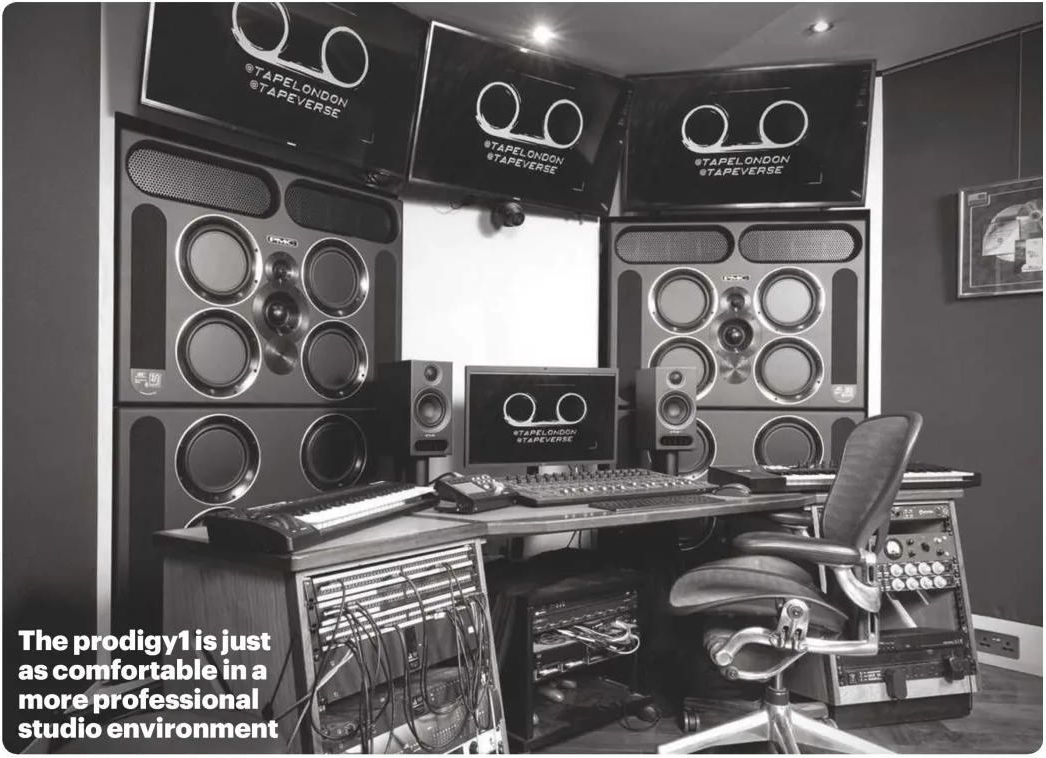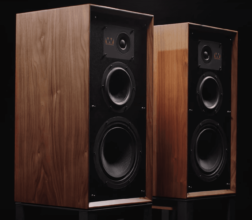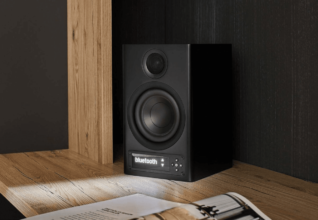PMC Prodigy 1 Review: Fire starter
We have a new speaker line from PMC, introducing The PMC Prodigy 1, the most affordable option from PMC. Let’s see if these PMC speakers are worth their price tag.
PMC, a UK-based company, started in 1990. Fun fact: I was a freshman in high school that year, driving around in a 1979 Dodge Aspen RT. PMC is known for making studio monitors and home speakers, and many major music superstars like Prince, Brian May, and Stevie Wonder have used PMC monitors in their recording processes. Dolby Atmos also utilizes PMC speakers for music mastering. Correct me if I’m wrong in the comments.
The Prodigy 1 speakers are designed and built in the UK. At $, they are in the higher range of what I usually review, but I’ve reviewed other speakers like the Buchardt P300 and the Aend speakers at a similar price point. I have enough reference points to assess whether these speakers are worth it. For PMC, this price is a bargain compared to the rest of their lineup.

The Prodigy 1 uses a transmission line design, which is different from other speaker companies. Let’s see what ChatGPT says about transmission line speakers:
“A transmission line speaker uses an acoustic transmission line within the cabinet, seeking to improve the quality of low-frequency sound. It uses a long folded path for the sound wave, usually damped by absorbing material, and is tuned to a specific frequency to reinforce low-frequency sounds. This design is more complex and expensive, which is why many companies avoid it.”

I had the PMC Prodigy 1 in my living room for the evaluation. I moved them from a small wall to a larger wall, which affected the presentation size but not the sound quality. They still sounded amazing.
The speakers are small, with a 5.25-inch woofer and a 1-inch soft dome tweeter. The finish is nice but prone to fingerprints. They have a reported frequency response of 50Hz to 25kHz, a 6-ohm nominal impedance, and 87dB sensitivity, making them moderately easy to drive.
I tested these with the Emotiva XPA Gen 3 multi-channel amplifier and the Weam amp, a class D amplifier with a 3255 Texas Instruments chip. Both drove the speakers well but sounded quite different.
I tested the speakers in various setups, including my home theater and while watching TV and movies. The sound stage and imaging are excellent, with great off-axis performance. The transmission line design delivers better and more authoritative bass compared to similar-sized sealed or ported speakers.
In conclusion, the Prodigy 1 are impressive, though expensive. They offer a balanced sound with excellent bass, mid-range, and treble. They work well in smaller rooms or nearfield setups. If you’re looking for an affordable high-end speaker from PMC, these should be on your shortlist.
While watching TV, I noticed some lower mid-range dialogue was a bit hard to hear around 350Hz, but music sounded warm and clear, especially female vocals like Adele’s. The treble is spectacular, combining the best qualities of metal and soft dome tweeters, providing a clear and snappy top end.
PMC prodigy 1 Tech Specs
| Product | PMC prodigy 1 |
| Origin | UK |
| Type | 2-way standmount loudspeaker |
| Weight | 4.5 kg each |
| Dimensions (WxHxD) | 165 x 320 x 237 mm |
| Features | – 27mm soft dome tweeter with integral grille |
| – 133mm natural fibre mid/bass driver | |
| – Claimed sensitivity: 87.5dB/1W/1M (6 ohm) | |
| Distributor | PMC Speakers |
| Website | pmc-speakers.com |
Competitors
Compared with the KEF LS50 Meta, the prodigy1 must concede that it cannot match the KEF’s formidable low end. The LS50 Meta is also easier to place and produces an exceptional stereo image. From there, though, the PMC begins to stage a fight back.
For similar but cheaper options, consider the PSB Imagine XB or the CSS Criton 1TDX for DIY enthusiasts. Compared to the Emotiva B2+, the Prodigy 1 offers cleaner mid-range and bass with a more natural top end.
See also: PMC Prodigy 5 Review
OUR VERDICT

So, instead of binge-watching Netflix or Hulu, maybe get yourself a pair of PMC Prodigy 1 and enjoy the sweet sounds of audio perfection in a small room.






